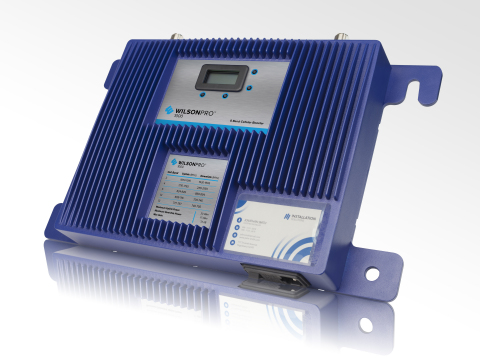Here’s a simple fact: you need better cell service at work. I can say this confidently because it’s true for almost everyone. Whether you’re a small business in a strip mall or office park or a giant company in a skyscraper, it’s still true. There are parts of the office where you get bad cell service. Has your IT person complained because he can’t call support when he’s in the server closet? Do your employees wander around during lunch looking for good service? Do your salespeople take frequent walks outside? Those are all clear indications that your cell service needs to improve
Don’t just get a booster, get a DAS
You might know about cellular signal boosters. It’s funny because most people have heard about them but most people think they’re too expensive or they don’t work. The same people who will spend $1,000 for a phone every other year won’t spend $400 for a cell booster that could work for a decade. Doesn’t make sense to me.
Cell boosters are good for homes and for smaller businesses, but if you’re really serious about improving service in a large space, you need a DAS.
What is a DAS?
DAS stands for “Distributed Antenna System” and I did a long article about it here. If you’re not into long reads, a DAS is a kind of cell booster system that puts multiple antennas all over the place so you get great cell service everywhere. There are two types: Active DAS (or Carrier DAS) brings in a line from the phone company while Passive DAS (or Off-Air DAS) amplifies the signals coming in over-the-air.
A Carrier DAS is going to be out of the question for most small to medium businesses, and it’s definitely not a DIY proposition, because you’ll need permits and cooperation from the phone company. But what about a Passive DAS? Could you start with a normal cell booster and turn it into a kick-butt DAS system?
All DAS systems are DIY
Every DAS system is going to be custom. When you start with a commercial-grade cell booster from WilsonPro, you’re getting the parts that most people need, but it’s up to you or your installer to customize as needed. You can add and subtract antennas, change locations, and in general do whatever it takes to cover the area you need.
What about using an off-the-shelf booster and upgrading it?
Using a SOHO cell booster can work, but you need to realize that these systems aren’t designed to be upgraded. There may be limitations.
The number of users may be limited
Some cell boosters are limited to 8 connections at a time. This means they’re really not suited to any sort of expansion. A booster that only lets 8 people get good cell signal isn’t going to make anyone happy
The amount of amplification may be limited.
A lot of home/small office boosters are limited to 65dB. Professional boosters go as high as 70dB. The different doesn’t seem like much but it’s there to combat the loss created by a 1×4 splitter. That’s the sort of splitter you’d use to put four antennas in your office, and that’s what it can take to fight dead spots. It can be worthwhile to make sure you have enough amplification
Broadcast power may not be the same
A lot of people think that amplification is the only measurement of how well a cell booster does. Broadcast power of the indoor antenna also comes into play. If the indoor antenna has more broadcast power it will reach a larger area. Commercial cell boosters often have more broadcast power because they also have circuitry that changes the broadcast power if it becomes a problem.
So what’s the best option?
If you’re not sure which cell booster or DAS system is best for you, it’s time to call in an expert. Luckily you can get tons of free advice by talking to the folks at Solid Signal. One call to 888-233-7563 gets you started. Pick up the phone and you’re on the road to the best possible cellular signal booster solution. Starting with your signal measurements, we can tailor a system that works well for you with just the parts you need. It may turn out that you only need a small-off-the-shelf system. If you need something bigger, though, we can get you what you need and even recommend pro installation if you’re not ready to actually do it all yourself.





